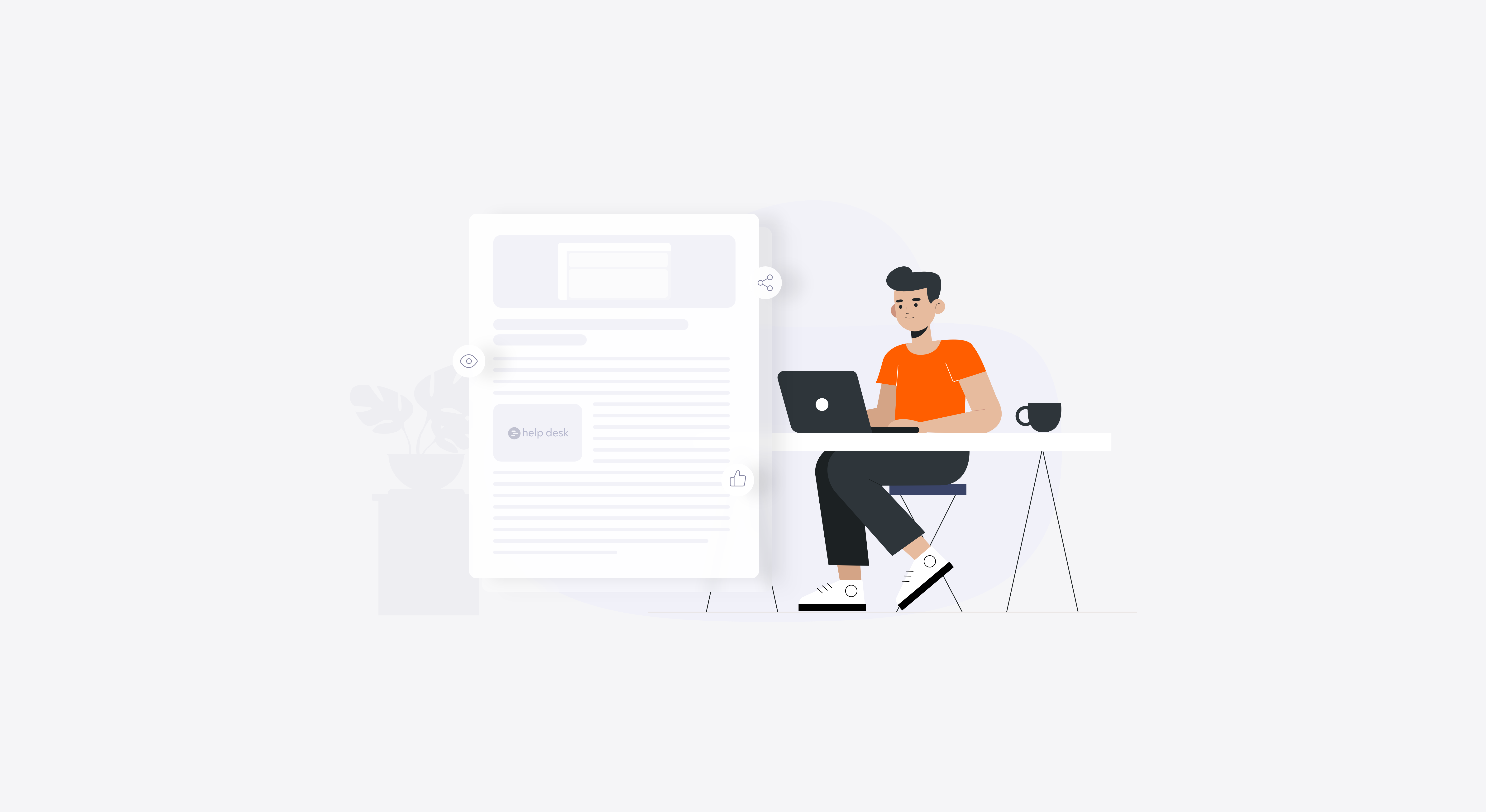Happy customers are the foundation of every business. They don’t just give you sales. They keep you functioning by giving recurring revenue, and even advocate for your business in their circle thus attracting potential future customers.
82% of customers seek recommendations from peers before buying something.
Customers also tell more people about their bad experiences as opposed to good experiences. If you listen to the concerns of customers before they translate into negative word-of-mouth or bad reviews, you are saving your existing customers from churning as well as your new customers from abandoning you. Customer feedback and satisfaction surveys are considered the key influencers behind major business decisions and rightfully so.
We have compiled common customer satisfaction survey templates and questions that you can use right out of the box to collect customer feedback and leverage it for better customer experiences.
Customer Satisfaction Survey Types
How do you involve your customers in every stage of your business that’s meant to meet their desired outcomes? How do you know if your customer is satisfied with your service? How likely is your customer to recommend you?
These are essential questions that can give you a sense of where you are heading in terms of customer satisfaction and making your product customer-centric. But these valuable insights are not necessarily a product of in-depth surveys and hours of combing through results. Following are some of the effective survey types and metrics used today.
Customer Satisfaction Score (CSAT): CSAT survey gauges your customers’ current perceptions of you and how satisfied they are with your products and services. CSAT surveys usually involve simple questions with a binary yes or no question or a range of options measuring the level of satisfaction.

Net Promoter Score (NPS): The popular NPS survey uses a rating scale to measure the recommendation likelihood of a customer by classifying them into Detractors (unhappy customers who rate 0-6), Passives (neutral customers who rate a 7 or 8), and Promoters (happy customers who rate a 9 or 10). The assumed relationship between referral behavior and customer satisfaction stems from the fact that customers have to be really satisfied with their experience to go the extra mile to recommend a company.

Customer Effort Score (CES): Simple surveys are the most effective, particularly when customers have a growing indifference to surveys. CES surveys are simple questions that ask how easy it was for customers to use a specific service. The answers are recorded as multiple-choice numbers ranging from very difficult to easy.

The effectiveness of the results lies more in asking the right questions at the right time rather than the method of survey employed. You need to know what your goals are before choosing a question and you need to be precise. These are the common types of questions used in customer surveys.
Customer Satisfaction Survey Question Types
Rating Scale: Rating scale or ordinal questions ask respondents to select a rank from a range of numbers like 0 to 10. These questions give you numerical results that serve as a satisfaction meter and is the most popular form of survey due to ease of usage. Surveys that need comparative results like NPS use rating scale surveys.
Likert Scale Questions: Likert scale surveys consist of numbers on a scale or responses ranging from strongly agree to strongly disagree to assess a customer’s level of agreement. This point scale question helps you analyze customer opinions at both micro or macro levels depending upon your goals.
Semantic Differential Questions: Semantic differential surveys are similar to Likert surveys as they both employ a 5-7 point scale to collect feedback. However, semantic differential questionnaires target specific areas of customer journey rather than the whole or general experiences.
Binary scale Questions: Binary scale questions are the most simple of all survey types. Probably customer favorites too, since they can check off a box with a straightforward yes or no answer and carry on. These questions can be used both for micro and macro-level drilling of problem areas.
Multiple Choice Questions: Multiple choice questions are used when you have a range of options related to each other or want to allow customers to choose more than one option. For instance, if you want to know how your customers landed on your product, you can give your customers options consisting of google search, social media, mobile apps, and so on. Every click-all-that-apply survey used multiple-choice questions.
Open-ended Questions: Open-ended questions are also great for follow-up surveys. They allow customers to express their feedback in their own words on a fill-out form.
Matrix Questions: Matrix questions are a set of Likert scale questions that capture the level of satisfaction or agreement of customers. They give clear, concise results that combine the insights of 5 or 7 different surveys in one go.
Let’s look at some of the common customer satisfaction survey questions you should be asking your customers.
In general, surveys can be broadly classified into product, marketing, demographics, satisfaction surveys, and so on. They all serve different purposes, assessing customer opinions at different stages and touchpoints of the buying process. Customer satisfaction surveys gauge how your customers perceive you and how satisfied they are with your products and services.
Customer Satisfaction Survey Questions
- How would you rate the support you received?
- How satisfied are you with our [Product]?
- How likely are you to recommend [XYZ] to a friend or colleague?
- How easy did we make it to solve your problem?
- How would you feel if you couldn’t use [Product Name] anymore?
- What stopped you from purchasing or using our product?
- How can we improve your experience with us?
- Thanks for your feedback. Can you please share the reason behind your score?
1. How would you rate the support you received?
Given the influence of support on the overall experience of your customers, this question is a must-have in your surveys. This popular CSAT survey question can have simple answers such as “good” or “bad” or even numerical options if there is a need for measuring your customer support effectiveness quantitatively. You can trigger these surveys between or after standalone events like a service call or onboarding.
2. How satisfied are you with our [Product]?
- Very satisfied
- Satisfied
- Neutral
- Dissatisfied
- Strongly dissatisfied
This is another common CSAT survey question that uses a Likert scale to measure the overall satisfaction meter of customers. The results will help you learn if your customers are satisfied with your product/service and how much. Likert scale questions are better for collecting feedback that should take every individual opinion into account, unlike NPS surveys which leave out passives (neutral customers) in the assessment.
3. How likely are you to recommend [XYZ] to a friend or colleague?
This popular NPS survey question calculates how likely your customers are to recommend your business to their peers. These types of rating scale questions yield quantified results that can help you compare yourself to an industry benchmark or your competitors. Customer responses are usually recorded on a scale of 1-10. NPS surveys can help you predict the actions of your loyal customer base, churn, and business growth.
4. How easy did we make it to solve your problem?
- Easy
- Neither easy nor difficult
- Difficult
These CES questions are usually triggered after a specific event, service call, or even added at the end of knowledge base articles. These surveys are great for assessing how useful are your self-service tools to your customers. Their non-intrusive and plain nature will give you just what you need to know.
5. How would you feel if you couldn’t use [Product Name] anymore?
- Very disappointed
- Somewhat disappointed
- Not disappointed
Companies use this question to estimate their level of product-market fit. This question reveals more than just customer satisfaction or retention and tells you whether customers really need your product. Product-market fit refers to the degree to which your product fulfills a market demand or solves a problem. A “very disappointed” could mean that your product indeed makes a difference in the market while a huge percentage of “not disappointed” could mean you need to rethink your product strategy.
6. What stopped you from purchasing or using our product?
These open-ended questions come in handy when you need detailed responses in the own words of customers. Feedback is an essential tool to align your roadmap with your customers’ needs proactively. But they are more instrumental in reversing bad experiences and winning unhappy customers back. When a customer stops buying from you or abandons usage, it could be indicative of a problem that needs immediate attention. Even if the customer switched for a reason that’s not your fault, it’s still better to ask. Negative feedback helps you grow in ways positive feedback can’t.
7. How can we improve your experience with us?
Open-ended questions are used only at selective instances because they are likely to have less response rates than the other. By not limiting the responses to a set of numbers or options, you are encouraging the customers to voice their opinions in detail. Coming from a user perspective, the answers can guide your improvement efforts in all aspects of your business.
8. Thanks for your feedback. Can you please share the reason behind your score?
Surveys are effective because they are simple and require very little effort from customers. Some feedback surveys are too simple. A yes or no answer can add little value to your decisions unless supplemented with related, more detailed information. The above question reveals valuable insights when paired with positive or negative feedback to ask customers for the reason behind their response.
Conclusion
Customer experience is the best competitive differentiator. Use these satisfaction survey questions to learn about your customers and assist them better.
While customer surveys help you learn about your customers, you can only expand on the rock-solid function you have already built. Sign up for a HappyFox Help Desk demo to get the basics of customer service right and step it up from there.








